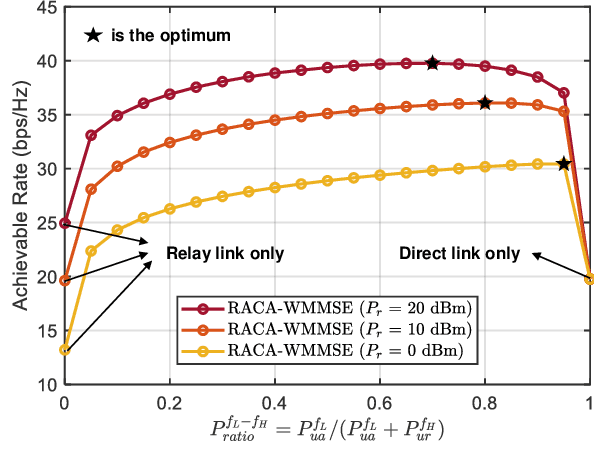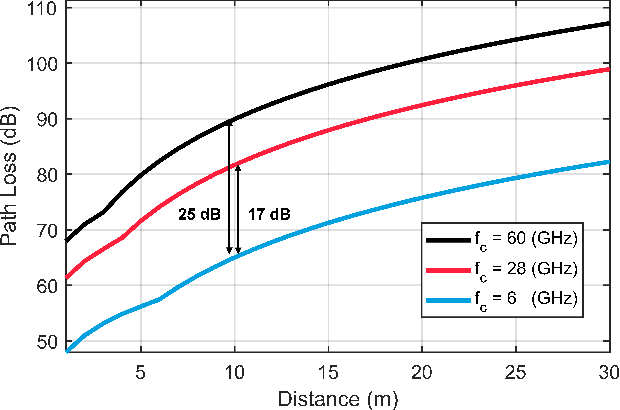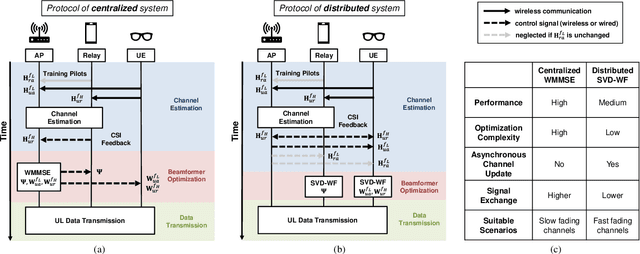Chi-Wei Chen
Andy
Relay-Assisted Carrier Aggregation (RACA) Uplink System for Enhancing Data Rate of Extended Reality (XR)
Jul 02, 2024



Abstract:In Extended Reality (XR) applications, high data rates and low latency are crucial for immersive experiences. Uplink transmission in XR is challenging due to the limited antennas and power of lightweight XR devices. To improve data transmission rates, we investigate a relay-assisted carrier aggregation (RACA) system. The XR device simultaneously transmits data to an access point (AP) and a relay in proximity over low-frequency and high-frequency bands, respectively. Then, the relay down-converts and amplifies the signals to the AP, effectively acting as an additional transmit antenna for the XR device. In this paper, we propose two algorithms to maximize the data rate of the XR device in their respective protocols. In the centralized protocol, the rate maximization problem is equivalently transformed as a weighted mean square error minimization (WMMSE) problem which can be solved iteratively by alternative optimization. In the distributed protocol, the rate maximization problem is decomposed into two independent sub-problems where the rate of the direct link and the rate of the relay link are maximized by singular value decomposition (SVD)-based methods with water-filling (WF). Simulation results show that the rate of the RACA system is improved by $32\%$ compared to that of the conventional carrier aggregation scheme.
 Add to Chrome
Add to Chrome Add to Firefox
Add to Firefox Add to Edge
Add to Edge